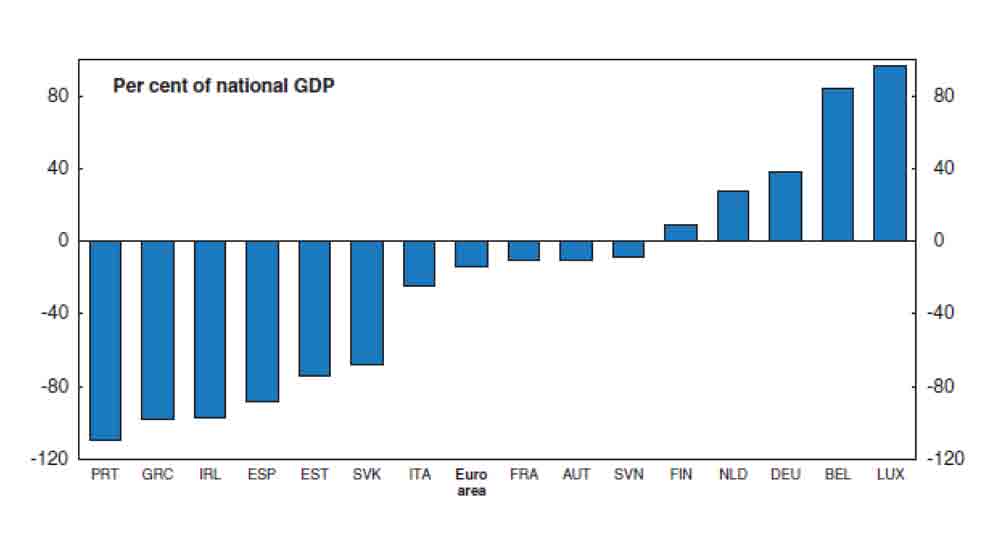Pier Carlo Padoan, OECD: A New Era for the Euro Area
The euro area is entering a new era. The importance of [approval by the German constitutional court of the European Stability Mechanism (ESM)] and the European Central Bank’s (ECB) new Outright Monetary Transactions (OMT) programme set out recently cannot be overstated. These should help create the conditions for stabilisation of the euro area crisis in the near-term. This would allow time for the imbalances of the past decade to be resolved. In the future, these instruments can be building blocks in a more stable monetary union.
Imbalances in the First Decade of the Euro Ended in Crisis
The first decade of monetary union since 1999 was an era that began with great stability and strong growth in many countries, but ended in a debt crisis and severe recession. The prevailing assumption was that countries had done enough in the years running up to monetary union to live with the discipline of a single currency. In fact, fiscal discipline was patchy and poor structural policies were holding back productivity and employment growth. At the same time, EU capital markets were liberalised, creating a new dynamic in capital flows.
By the start of the crisis, there had been a large build-up of excessive financial, fiscal and economic imbalances in the euro area. There were big and sustained current account deficits and surpluses. Countries such as Greece, Ireland, Portugal and Spain became heavily indebted, Growth in Germany was unbalanced between a strong export sector and feeble domestic demand.

Some euro countries are heavily in debt
The global financial crisis in 2008 triggered the end of the good times. Banks reassessed the risks of the peripheral economies and cut back their lending. This led to banking crises and rising borrowing costs for governments. Housing bubbles burst, leaving a large overhang of debt. These economies need to shift from relying on housing and government demand to exports while domestic balance sheets are being repaired.
Resolving the imbalances built up over the past decade will take time. This will be require fiscal consolidation over many years, the cleaning up of banking systems and deep reforms to make peripheral economies competitive in European and world markets.
The Euro Area Has Faced a Negative Spiral
Strong pressure from financial markets has called into question whether euro countries will have the time they need to adjust. Three powerful negative feedback loops have pulled euro area countries into a “bad equilibrium” where financial fears and weakening growth feed off each other.
First, fears of government default led to rising state borrowing costs. These are self-reinforcing because rising interest costs makes it harder to rebuild the public finances. At the same time, market pressure forced the pace of fiscal consolidation, increasing the downward pressures on growth.
Second, rising yields reduced the value of bank’s sovereign debt holdings, adding financial stability risks. In turn, this increased fears of further government bail outs of the banking system, thereby pushing borrowing costs up further.
“Strong pressure from financial markets has called into question whether euro countries will have the time they need to adjust.”
Third, some market participants began to call into question whether countries would stay inside the euro, raising the borrowing costs that then make it more costly to stay in the monetary union.
Strong policy measures by EU leaders and countries failed to restore market confidence. This includes the massive fiscal consolidation efforts underway. The EU fiscal rules were strengthened through the “six pack” reforms to the Stability and Growth Pact and a new treaty, the “Fiscal Compact”, which commits countries to put strong budgetary rules into national law. Many countries are undertaking deep structural reforms to labour markets and liberalising their product markets.
The New Era – Monetary Union With a Backstop
What was missing was a credible “backstop” for euro area governments. Bond markets, nervous about developments, could not see how governments could finance themselves during the fiscal consolidation and to support their banking systems.
The architecture of the euro area did not allow for this problem – the monetary union had no accompanying fiscal union. This contrast with the United States, where the federal government transfers resources across states and provides the backstop for the banks. Furthermore, there were no “rescue mechanisms” for countries that are solvent but unable to access market funding.
During recent years, the euro area has been surviving through a temporary backstop. This started with the loans provided to Greece in 2010. A new body – the European Financial Stability Fund (EFSF) – was set up and financed joint programmes with the IMF in Ireland and Portugal. At the same time, the ECB has provided large scale funding to banks through its expanded monetary operations and set up a Securities Market Programme for government debt.
“This was enough to help smaller countries but would have been stretched by assistance to Spain and Italy.”
The problem with these temporary backstops is that they were too small and limited in scope. EFSF resources amounted to only €440 billion (4.5% of euro area GDP), even after various safeguards in the original scheme were removed. This was enough to help smaller countries but would have been stretched by assistance to Spain and Italy. An attempt to “leverage” these funds failed and by 2012. The ECB Securities Market Programme (SMP) only reached just over €200 billion and lacked a clear commitment to extensive intervention.
The new framework is much stronger. The first pillar is the European Stability Mechanism (ESM) that will replace the EFSF. It has €500 billion in funds with paid in capital of €80 billion. This strengthens its ability to raise funds in the markets. The second pillar is the ECB Outright Monetary Transactions (OMT) programme that will replace the SMP. Subject to conditionality being met, this makes an unlimited commitment to intervene to purchase sovereign bonds to ensure the effective functioning of monetary transmission and to dispel euro “break-up” premia.
The back stop mechanisms have not developed in isolation: they are only possible because of European commitments to undertaking necessary economic adjustment and to long-term changes to the architecture of the monetary union. The reforms of the Stability and Growth Pact and the “Fiscal Compact” reduce the risk of moral hazard that the ESM could otherwise create. Equally, direct ESM intervention in the banks in the future will be supported by the proposed “banking union” and a common supervisor.
The New Era – the Euro Area With a Backstop
The euro area is now beginning a new era. The European Stability Mechanism and the willingness of the ECB to intervene through the OMT create a necessary backstop for euro area governments. This should allow time to resolve the imbalances and crisis coming from the imbalances that built up during the first era of the monetary union. This puts the euro area on a more stable footing. But, there is much unfinished business to resolve the short-term problems, including completing fiscal consolidation and restoring the banks to health. A major effort will be needed to create an effective “banking union”. Europe still faces huge challenge to make the structural reforms needed to create strong sustainable growth.
About the Author
 Mr. Pier Carlo Padoan took up his functions as Deputy Secretary-General of the OECD on 1 June 2007. As of 1 December 2009 he was also appointed Chief Economist while retaining his role as Deputy Secretary-General. In addition to heading the Economics Department, Mr. Padoan is the G20 Finance Deputy for the OECD and also leads the Strategic Response, the Green Growth and Innovation initiatives of the Organisation and helps build the necessary synergies between the work of the Economics Department and that of other Directorates.
Mr. Pier Carlo Padoan took up his functions as Deputy Secretary-General of the OECD on 1 June 2007. As of 1 December 2009 he was also appointed Chief Economist while retaining his role as Deputy Secretary-General. In addition to heading the Economics Department, Mr. Padoan is the G20 Finance Deputy for the OECD and also leads the Strategic Response, the Green Growth and Innovation initiatives of the Organisation and helps build the necessary synergies between the work of the Economics Department and that of other Directorates.
Mr. Padoan is an Italian national and prior to joining the OECD was Professor of Economics at the University La Sapienza of Rome, and Director of the Fondazione Italianieuropei, a policy think-tank focusing on economic and social issues.
From 2001 to 2005, Mr. Padoan was the Italian Executive Director at the International Monetary Fund, with responsibility for Greece, Portugal, San Marino, Albania and Timor Leste. He served as a member of the Board and chaired a number of Board Committees. During his mandate at the IMF he was also in charge of European Co-ordination.
From 1998 to 2001, Mr. Padoan served as Economic Adviser to the Italian Prime Ministers, Massimo D’Alema and Giuliano Amato, in charge of international economic policies. He was responsible for co ordinating the Italian position in the Agenda 2000 negotiations for the EU budget, Lisbon Agenda, European Council, bilateral meetings, and G8 Summits.
He has been a consultant to the World Bank, European Commission, European Central Bank.
Mr. Padoan has a degree in Economics from the University of Rome and has held various academic positions in Italian and foreign universities, including at the University of Rome, College of Europe (Bruges and Warsaw), Université Libre de Bruxelles, University of Urbino, Universidad de la Plata, and University of Tokyo. He has published widely in international academic journals and is the author and editor of several books.
You may have an interest in also reading…
SteadyPay Embedded Microfinance Fintech: Safety Net for the Gig Worker
SteadyPay, the award winning FinTech, is at the forefront of delivering accessible and innovative financial solutions for independent workers in
Otaviano Canuto, World Bank: Can Services Replace Manufacturing as an Engine for Development?
Manufacturing expansion has been a vehicle for job creation, productivity increases, and growth in non-advanced economies since the second half
Otaviano Canuto, World Bank: Global Imbalances on the Rise
Discussions around large current account imbalances among systemically relevant economies as a direct threat to the stability of the global




















































































